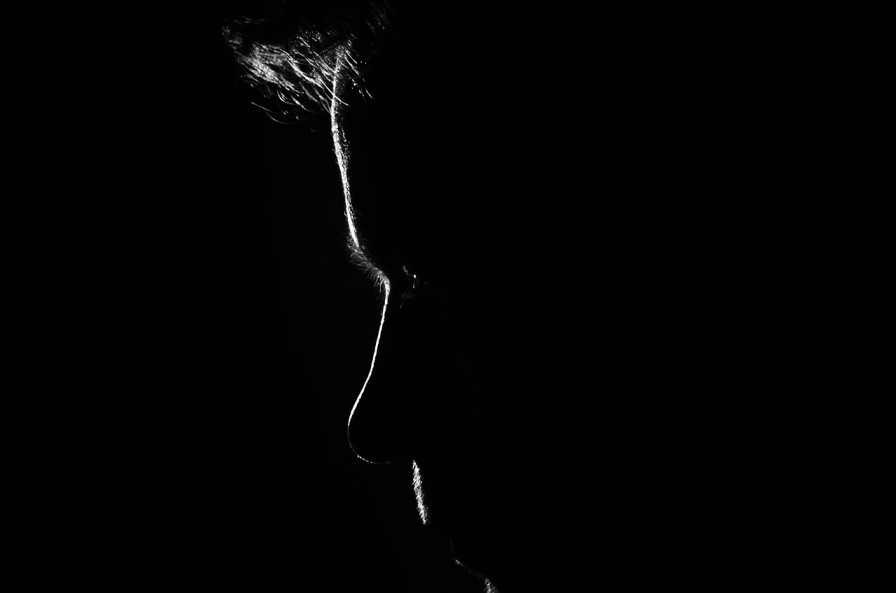
No Longer Human explores several themes throughout the novel, including themes of alienation and isolation, escapism, depression, mental illness, identity, art, and its expression
No Longer Human | THEMES
Isolation
Isolation, as depicted in No Longer Human, can be perceived as a means of evading and escaping from one’s fears. No Longer Human delves into the profound experience of feeling entirely detached and estranged from society. Yozo, grapples with an inherent sense of discord with the people around him, perceiving human behavior and societal norms as unnatural and inscrutable. For Yozo, understanding the intricacies of human conduct seems elusive, and he copes by emulating what he believes to be socially acceptable behavior. Paradoxically, this constant performance only serves to deepen his isolation, as he conceals his “true nature,” making genuine connections with others nearly impossible.
It is important to note that No Longer Human does not present a definitive argument about social isolation. However, the novel deliberately abstains from providing definitive answers concerning this subject, as it does not aim to offer solutions or concrete outcomes to those who experience isolation due to societal pressures. Instead, the book primarily serves as a deconstruction of the facets of humanity through the lens of its central character. It offers an intimate portrayal of Yozo’s experience, functioning as a snapshot or documentation of a profoundly lonely man. The novel refrains from providing a singular explanation for Yozo’s initial alienation from humanity.
While his early traumatic experience of sexual abuse by his family’s staff undeniably contributes to his fear of humans and reluctance to connect, his sense of estrangement predates this trauma. The novel suggests the possibility that such feelings tend to intensify over time, as Yozo becomes so dissociated by the end of the novel in his pervading inability to create any connection or find a sense of belonging in society, that he claims himself as a person “disqualified from being human.”
Society and Self
Dazai skillfully employs facial symbolism as a powerful vehicle to explore the intricacies of self and society. In the book’s introduction, the narrator ponders the enigmatic aspects of Yozo’s face, which possess an uncanny ability to fade from memory and fail to convey the essence of a human countenance. This observation resonates with Yozo’s conviction that he is an inherently wretched being, devoid of the innate capacity to connect with others or genuinely embody humanity. However, beneath this perception lies a deeper tragedy: Yozo has not fallen short of being human; instead, he has fallen short of being recognized as one.
The face functions as the conduit through which individuals navigate their social interactions. Yozo’s portrayal with an unattractive visage metaphorically mirrors his social inadequacies. He grapples with the incapacity to empathize, embrace the potential for human love, or establish a firm sense of identity and connection with others. In essence, the distortion of one’s face symbolizes the erosion of dignity, as the face serves as both a social and moral emblem. It becomes emblematic of Yozo’s experiences marked by humiliation, guilt, and maltreatment.
Despite the absence or distortion of his face, Yozo clings to a flicker of hope. He discovers solace in the distorted portrayals found in Vincent van Gogh and Amedeo Modigliani’s paintings, depicting what he terms “ghosts” — individuals seemingly devoid of moral presence. An epiphany dawns on Yozo as he views these artworks, realizing that, as he puts it:
“after enduring repeated wounds and intimidation at the hands of… human beings… depict these monsters exactly as they appeared.”
For a time, Yozo immerses himself in painting, with a special focus on self-portraits, thus discovering a fleeting means to reclaim his lost face, if only for a brief moment.
Depression
No Longer Human delves into the societal attitudes and stigmas associated with depression and mental health struggles. Throughout the story, Yozo’s depression is met with a lack of genuine sympathy from almost everyone in his life. While he technically has people who support him during difficult times, they often view him with disdain for his perceived inability to conform to societal norms. When Yozo and Tsuneko decide to take their own lives, and Yozo survives, he experiences the harsh consequences of the stigma surrounding suicide.
Yozo is taken from the hospital to jail and charged as an “accomplice to a suicide,” a treatment that only intensifies his feelings of depression and alienation. His father and family disown him, refusing any contact. This societal response illustrates that Yozo’s depression is often interpreted as deliberate antisocial behavior deserving of punishment rather than a mental health issue requiring help. Consequently, it is unsurprising that Yozo struggles to connect with society, as it has shown him hostility during his most vulnerable moments. No Longer Human sheds light on how the stigma surrounding mental health in 1930s Japanese society could exacerbate the suffering of individuals like Yozo and hinder their ability to cope with their unhappiness.
Art and Expression
Despite Yozo’s persistent efforts to conceal his inner thoughts and emotions in his daily life, he is irresistibly drawn to various forms of self-expression that allow him to convey his “true nature.” During his adolescence, he discovers the potential of painting as an outlet, enabling him to recreate his unique worldview. While he had previously excelled at drawing cartoons merely to please his peers and mask his authentic self, an insightful comment from his classmate Takeichi about a Van Gogh self-portrait opens his eyes to the idea that art does not always have to be conventional, beautiful, or entertaining; it can also be unsettling, weighty, and expressive. Motivated by this revelation, Yozo begins crafting unsettling paintings that reveal the hidden aspects of his true self, even if he only shares them with Takeichi. This shift towards art as an outlet underscores his yearning for a means of self-expression, despite his intense efforts to conceal his emotional landscape from others.
Furthermore, the novel’s journalistic first-person format itself underscores the idea that Yozo possesses an innate longing for self-expression, even as he resists revealing anything about himself to others. The bulk of the narrative consists of Yozo’s fictionalized notebooks, in which he meticulously articulates his thoughts and feelings. Interestingly, Yozo ultimately sends these private notebook entries to an old bartender from his past, indicating a significant shift towards opening up to the world after decades of staunch privacy.

